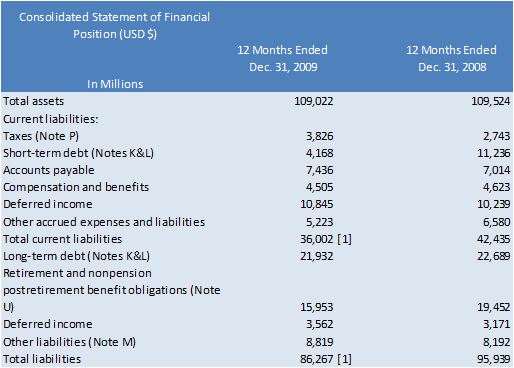7.16 Adjustments to
CAPEX for the Financing Decision
The difference between FCFF and FCFE is
to adjust for the fact that debt-holders fund part of the CAPEX.
We can estimate what this adjustment is from estimating
what proportion of the firm’s assets are funded by debt.
To do this we will consider one additional ratio called
the Debt Ratio:
Debt to Total Assets (D/A)
As a first pass it can be assumed that
this is the proportion of CAPEX funded by debt-holders is
measured by the Debt Ratio
IBM Example:
Working from the 2010 10-K annual report
and the numbers for 2009 and 2008 are respectively provided
below from left to right.

Source 10-K report (Consolidated
Statement of Financial Position exported to Excel workbook).
The Debt to Total Assets Ratio
(i.e., Debt Ratio) = (21,932 + 4,168)/109,022 = 0.239
FCFE = FCFF + Debt Ratio*Adjusted
CAPEX =12.381 +6.519*0.239 =13.939 billion because recall
that FCFE is higher than FCFF for a firm financed by both
debt and equity.
Assumption: IBM
has adjusted for interest net of tax.
Cautionary Remark:
Care must be taken when applying this
heuristic to a highly leveraged firm.
For example, suppose leverage (Debt to Total Assets is
around 90%. Under
this heuristic virtually all of the CAPEX would be added back!
As a result, the Debt ratio actually applied to the CAPEX
adjustment should be reduced to be more conservative to allow
for the fact that the high D/E is expected to mean revert to
some lower long term average. In
addition, conservative adjustments also provide insights into
the scenario of what if credit suddenly dries up and a firm is
no longer able to permanently finance a portion of its CAPEX via
debt?
In addition, this adjustment to CAPEX
does not apply to a financial institution.
For these institutions the investment and financing
decisions are merged and so it is inappropriate to attempt to
separately account for this when estimating CAPEX.
